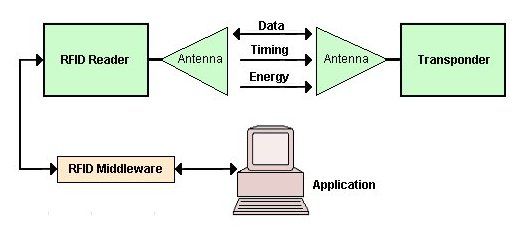In recent years, basic RFID system componets has captured the attention of manufacturing industries all over the world due to its sophisticated applications which include but not limited to high-speed inventory of items and efficient handling of materials. Anti-shoplifting RF tags are often smaller and simpler than this: instead of needing a chip to generate a unique identifier code, all they have to do is receive the incoming radio waves and retransmit the same electromagnetic energy at a different frequency. Smartcards used on buses, subways (the underground or metro), and other forms of public transportation also contain RFID chips. Smartcards fall into two categories known as contact and contactless according to whether you have to hold your card to the reader or a short distance away (and that depends on the type of RFID technology it’s using). A basic introduction to RFID but also a hands-on practical guide for people who actually want to use it.
Libraries make extensive use of RF and RFID: RF tags to secure their stock and CXJ RFID tags to make it possible for people to use self-service checkout machines. An RFID chip implanted under your skin might save your life in an accident by transmitting your medical information to an emergency team.
When you check books in or out of a library using one of those machines, you’ve probably wondered how it knows which book you’re borrowing without you having to scan a barcode The answer is that there is an RFID chip stuck inside the book’s cover. Soon, you might have an RFID chip embedded in your passport to speed your passage through ports and airports.
A slightly more technical book also aimed at people who want to use RFID in business or other applications. A practical guide to using RFID in simple home projects, including basic card readers, Arduino, and home automation circuits. Compares RFID with other security systems, explains the fundamental principles of RFID sensor systems, then considers applications in logistics (such as warehouse distribution), cars (such as automatic toll collection), health, space, and navigation.
Despite their small size, RFID tags still have the ability to compromise the security of a computer system. RFID tags come in three general varieties:- passive, active, or semi-passive (also known as battery-assisted). The frequencies used for RFID in the USA are currently incompatible with those of Europe or Japan. Tags which are world-readable pose a risk to both personal location privacy and corporate/military security.







